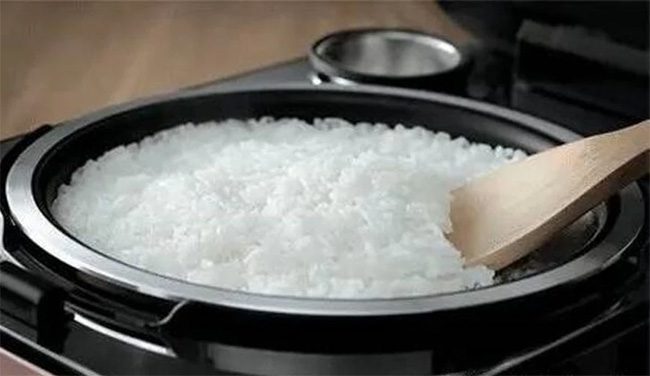The Japanese also have a habit of eating white rice, yet their rates of obesity and diabetes are very low. What is the difference in their eating habits?
White rice is one of the essential dishes in every family meal. However, consuming too much white rice can overload blood sugar levels, leading to obesity and an increased risk of diabetes.
Many studies indicate that diabetes is related to excessive consumption of white rice. White rice has a relatively high glycemic index (GI), and long-term overconsumption can significantly impact blood sugar levels.

White rice is an essential dish in every family meal. (Source: Sohu).
The Japanese also enjoy white rice but have a lower incidence of diabetes due to the following three reasons.
Eating Rice Cold
Most Vietnamese and some other Asian countries prefer to eat rice while it is still hot. However, the Japanese primarily eat rice cold, such as in sushi and onigiri (rice balls). The Japanese like to cook rice and then refrigerate it to cool before eating.
When rice is stored cold, its starch molecules cluster together to create more resistant starch. The presence of resistant starch slows down digestion and absorption, causing blood sugar levels to rise more slowly.
Eating Smaller Portions
The Japanese have a relatively uniform dining style, with fixed meal times and moderate portion sizes, and the main dishes are often similar. Although the dining table may appear to have many bowls and plates, their sizes are relatively small. On the table, they present small amounts of food, ensuring a balance between rice and other dishes, with a strong emphasis on nutritional balance.
This can be considered a very healthy eating habit. By following a portion-controlled diet, the daily intake of sugar remains consistent, helping to achieve uniform health standards. This portion-controlled eating style is also very suitable for people with diabetes.
Incorporating Various Ingredients into Rice
When cooking rice, Japanese families tend to add various legumes and grains.
Incorporating different types of beans helps limit spikes in blood sugar levels. The reason is that these grains are high in fiber, which effectively lowers blood sugar.


















































